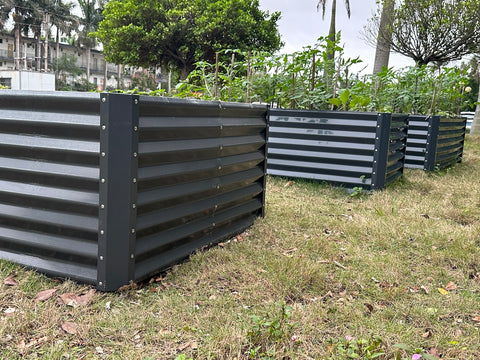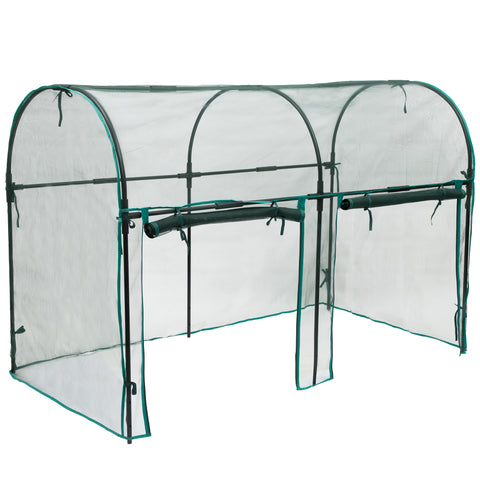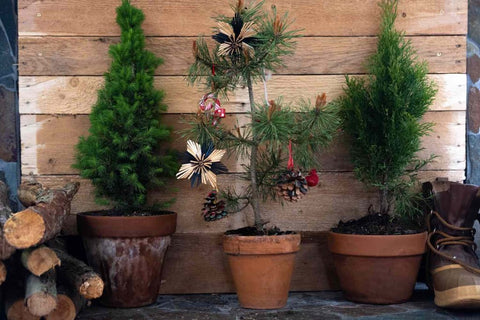Gardening enthusiasts, whether beginners or seasoned green thumbs, often dream of cultivating their favorite plants year-round. Enter the realm of DIY raised bed greenhouses—a clever and space-efficient solution that not only extends the growing season but also brings the joy of gardening to small spaces. We'll explore the art of creating a small greenhouse for your raised bed and delve into the myriad benefits this innovative gardening approach can offer.The following content also has some reference value for raised garden beds.
Creating a Small Greenhouse for Your Raised Bed

Materials Needed:
- PVC pipes (or treated lumber for the frame)
- Greenhouse plastic or clear polycarbonate panels
- Screws
- Hinges (for vented windows or doors)
- Power drill
- Measuring tape
- Level
- Staple gun (for securing greenhouse covering)
- PVC connectors (if using PVC pipes)
- PVC caps
- Irrigation system components (optional)
Steps:
1. Measure and Plan:
Measure the dimensions of your raised bed to determine the size of the greenhouse structure needed. Plan the height and shape of the greenhouse to ensure it provides adequate coverage for your plants while allowing space for ventilation.
2. Construct the Frame:
Choose either PVC pipes or treated lumber to construct the frame of your small greenhouse. For PVC pipe frames, create hoops by bending the pipes over the raised bed and securing them in the ground. If using lumber, build a rectangular or arched frame around the raised bed, ensuring it is securely anchored to the ground.
3. Attach the Greenhouse Covering:
Stretch the greenhouse plastic or secure clear polycarbonate panels over the frame. If using greenhouse plastic, pull it tightly over the frame and staple it securely. Ensure there are no gaps or loose areas that could compromise insulation. If using polycarbonate panels, secure them to the frame with screws.
4. Create Ventilation Openings:
To regulate temperature and humidity, create ventilation openings in your small greenhouse. Use hinges to attach windows or vents along the sides of the structure. This allows for easy opening and closing based on temperature needs.
5. Secure the Greenhouse Structure:
Ensure that the greenhouse structure is securely anchored to the ground. This is crucial to withstand wind and weather conditions. If using PVC pipes, secure them with PVC caps to prevent any sharp edges.
6. Install Irrigation System (Optional):
If desired, install an irrigation system within the raised bed. Drip irrigation or soaker hoses can be laid out strategically to provide consistent moisture to the plants. This reduces the need for manual watering and ensures optimal hydration.
7. Personalize and Decorate:
Add personal touches to your small greenhouse to make it visually appealing. Consider painting the frame, adding decorative elements, or incorporating hanging features for tools or small potted plants.

Benefits of DIY Raised Bed Greenhouses for Small Spaces
- Extended Growing Season:
Perhaps the most significant benefit of a DIY raised bed greenhouse is the extension of the growing season. By providing a controlled environment, you can start planting earlier in the spring and continue harvesting well into the fall, maximizing the productivity of your small gardening space.
- Temperature Control:
Small greenhouses offer the advantage of temperature control, allowing you to create a microclimate for your plants. This is particularly beneficial in regions with unpredictable weather or where extreme temperatures could pose a challenge to certain crops.
- Protection from Pests and Diseases:
The greenhouse structure acts as a physical barrier, protecting your plants from unwanted pests and diseases. This is especially crucial in small spaces where pests can easily affect the entire garden. A greenhouse provides a shield against nibbling critters and soil-borne diseases.
- Space Optimization:
DIY raised bed greenhouses are a space-efficient solution, perfect for small gardens or even balconies. The raised bed provides a defined growing area, while the greenhouse structure allows for vertical gardening, hanging baskets, and shelving, maximizing the use of limited space.
- Customization for Small Spaces:
Small greenhouses offer the flexibility to customize the structure based on the available space and specific needs. Whether you're working with a tiny backyard, balcony, or rooftop, a DIY raised bed greenhouse can be adapted to fit snugly into your small gardening space.
- Reduced Environmental Impact:
By growing your own produce in a controlled environment, you reduce reliance on store-bought vegetables and herbs. This not only contributes to a healthier lifestyle but also minimizes your carbon footprint by decreasing the transportation and packaging associated with store-bought produce.
- Educational Opportunities:
Small greenhouses provide an excellent educational platform, especially for beginners or those gardening with children. The controlled environment allows for hands-on learning about plant growth, the impact of different environmental factors, and the joy of harvesting your own food.
- Aesthetic Appeal:
Beyond functionality, DIY raised bed greenhouses add an aesthetic appeal to your small gardening space. The visual impact of a well-designed greenhouse can transform a compact area into a lush and vibrant oasis, enhancing the overall ambiance of your outdoor or indoor gardening space.
Tips for Maintaining Your Small Greenhouse
- Regular Monitoring:
Keep a close eye on the conditions inside the greenhouse. Regularly monitor temperature, humidity, and the overall health of your plants. This allows you to make adjustments promptly and ensure an optimal environment for growth.
- Ventilation Management:
Proper ventilation is key to preventing overheating and ensuring a healthy environment for your plants. Monitor the temperature inside the greenhouse and adjust the ventilation openings accordingly. Consider installing an automatic vent opener for convenience.
- Watering Consistency:
Maintain consistent watering practices to ensure your plants receive the right amount of moisture. While the greenhouse provides some protection from rain, it's essential to monitor soil moisture levels and water accordingly.
- Crop Rotation:
Even in a small greenhouse, practicing crop rotation is beneficial. Move plants around within the raised bed to prevent the buildup of pests and diseases. This also helps maintain soil health and nutrient balance.
- Pest Management:
While a greenhouse provides a level of protection, pests can still find their way in. Implement natural pest management strategies and regularly inspect your plants for signs of pests or diseases. Introduce beneficial insects if necessary.
- Seasonal Adjustments:
Be prepared to make seasonal adjustments to your small greenhouse. In colder months, add additional insulation or use row covers to protect plants from frost. In warmer months, maximize ventilation to prevent overheating.
- Harvesting Schedule:
Plan your planting and harvesting schedule to make the most of the extended growing season. Utilize the greenhouse space efficiently by staggering plantings for a continuous harvest.

Conclusion
The enchanting world of DIY raised bed greenhouses opens up endless possibilities for gardening in small spaces. Whether you have a petite backyard, balcony, or rooftop, the combination of raised beds and a small greenhouse allows you to cultivate your favorite plants year-round. Embrace the benefits of extended growing seasons, temperature control, and protection from pests as you embark on a journey of gardening magic within the confines of your compact outdoor or indoor oasis. With a bit of creativity and a passion for nurturing plants, your small greenhouse becomes a testament to the incredible potential that even the tiniest gardening spaces hold. Happy gardening!









